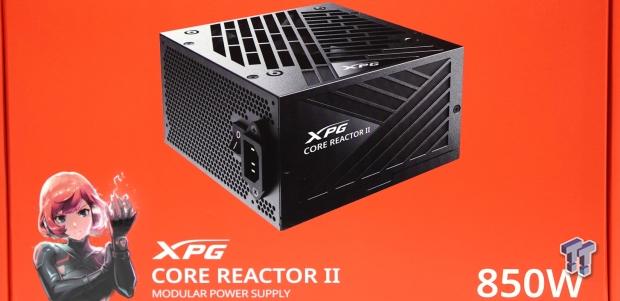
The Bottom Line
Pros
- + Performs within the 80 PLUS Gold specification
- + Great pricing for lower-wattage models
- + Full 600w from 12VHPWR connecter
- + Premium 105c Japanese capacitors
- + 10-year warranty
Cons
- - None
Should you buy it?
AvoidConsiderShortlistBuyIntroduction, Specifications, and Pricing
Back with another product from our friends over at XPG, this time with the XPG Core Reactor II 850w ATX 3.0 PSU. The Core Reactor II features both an 80 Plus and Cybenetics gold ratings. The Core Reactor II also has a full 600-watt 12VHPWR cable while achieving a compact ATX profile.
The MSRP pricing for the Core Reactor II varies for each wattage model, starting with 650w for $109.99, 750w for $129.99, 850w for $139.99 (review sample), 1000w for $209.99, 1200w for $249.99, and lastly an 80 Plus Titanium rated 1600w model for $699.99. So why don't we dive in and see what the XPG Core Reactor II 850w ATX 3.0 PSU is all about?

Packaging
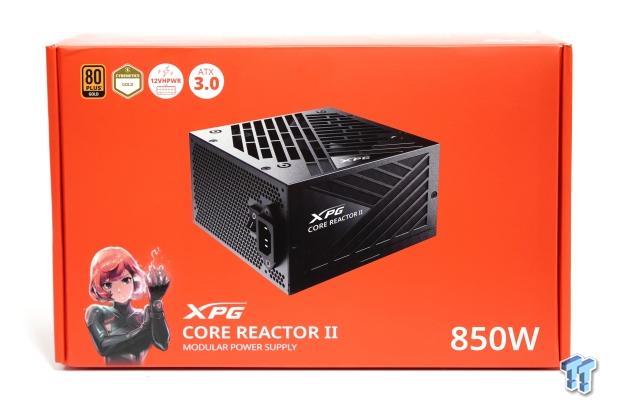
Outside the XPG Core Reactor II box is the PSU and Mera, the company's anime mascot.
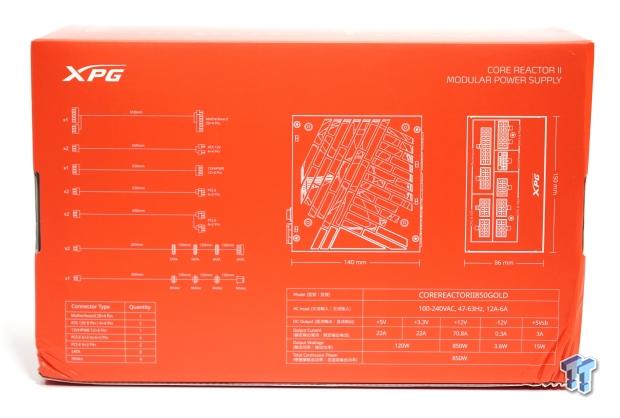
The backside of the packaging shows all the specifications, dimensions, and included cabling for the XPG Core Reactor 850w ATX 3.0 PSU.
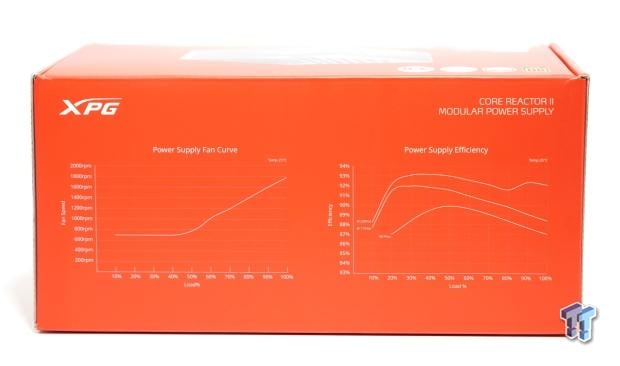
The rear side of the packaging shows the power supply fan curve and the power supply efficiency, which we will be testing at a 50% load later in the review.
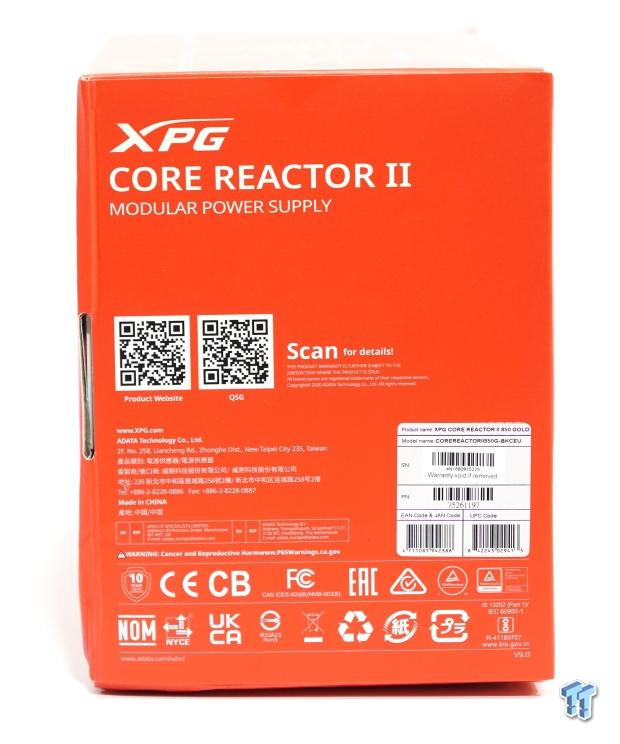
This side of the packaging shows a few QR codes for the product website or to get a digital copy of the manual. This side also offers all the barcodes and various certifications.
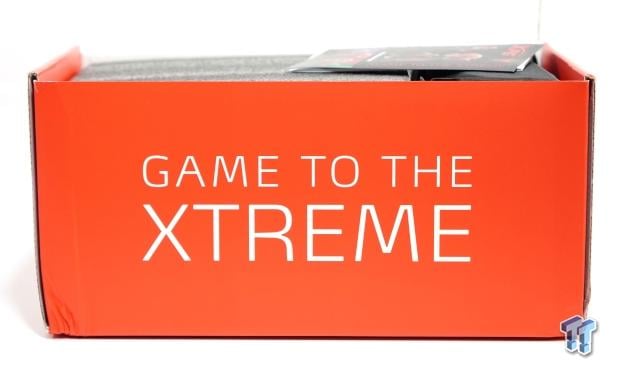
XPG's gaming slogan is "Game to the Xtreme".
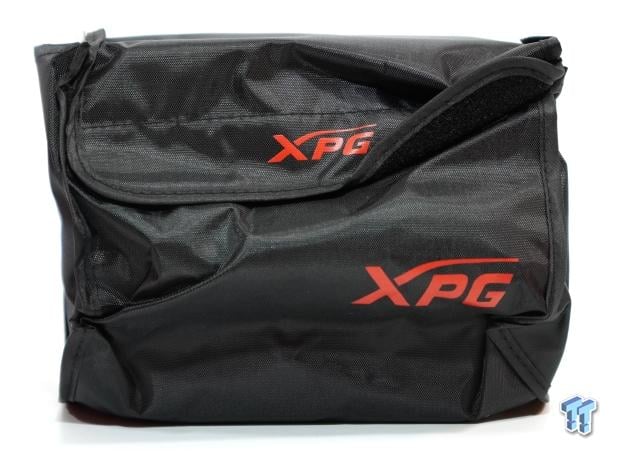
All the cabling is contained in this nice XPG-labeled cable bag.
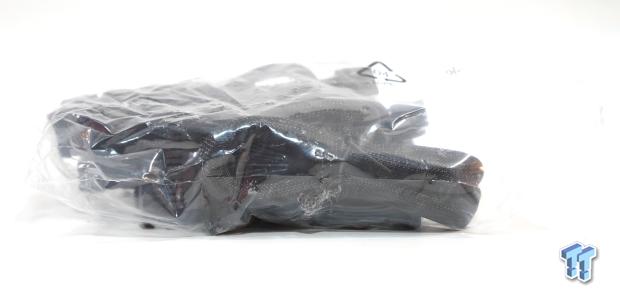
XPG placed all the cables in a plastic bag before placing them above the black bag.
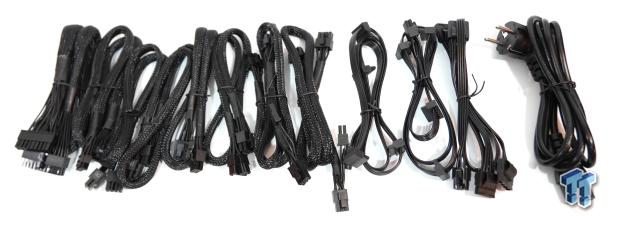
All the cables included with the XPG Core Reactor II 850w ATX 3.0 PSU are sleeved; apart from a few SATA and MOLEX connections, you won't see those cables.
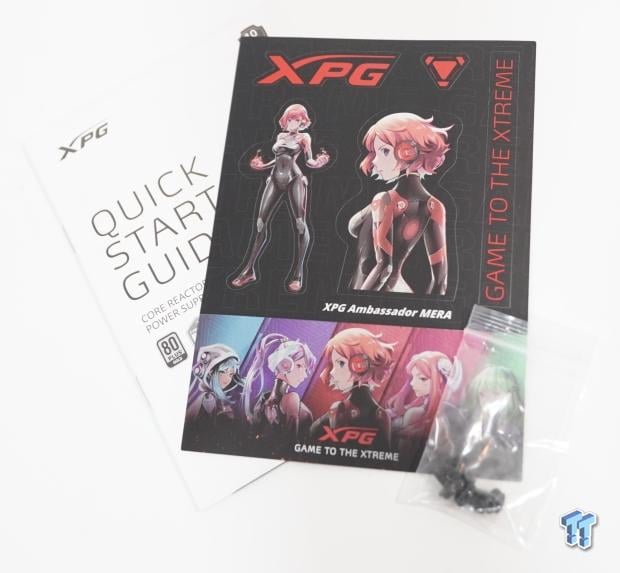
Also included in the box were a quick start guide, a few black screws, and a sheet of XPG and Mera stickers.
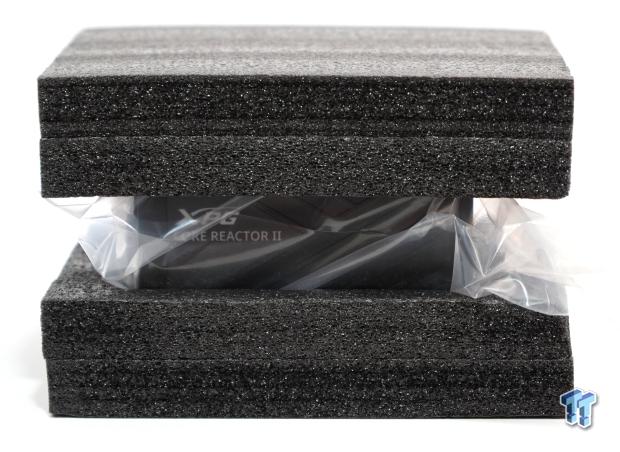
Lastly, the XPG Core Reactor II 850w ATX 3.0 PSU packaging has two black pieces of dense foam and a clear plastic bag protecting the PSU from any damage during shipping.
Outside the XPG Core Reactor II 850w ATX 3.0 PSU
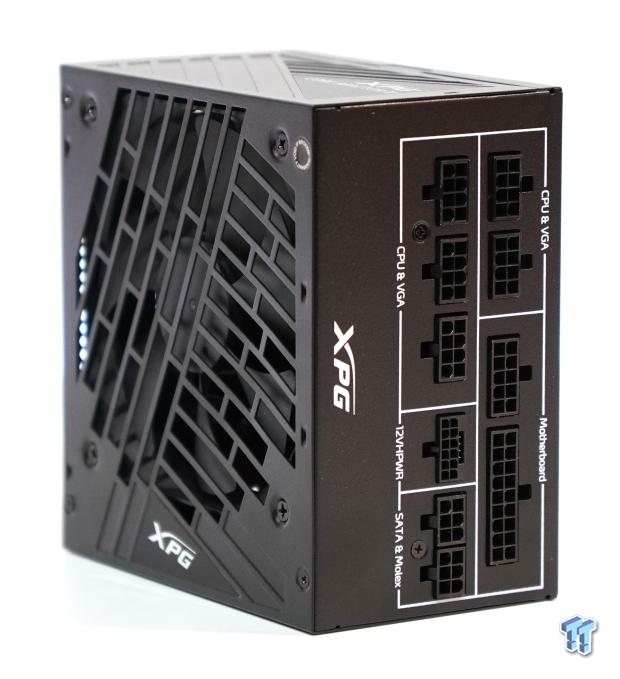
Removing the XPG Core Reactor II 850w PSU from its packaging is a familiar sight: a black PSU. All jokes aside, the Core Reactor II PSU is a typical PSU with good fan ventilation from its open grille design, good cable input layout, and an overall compact design.
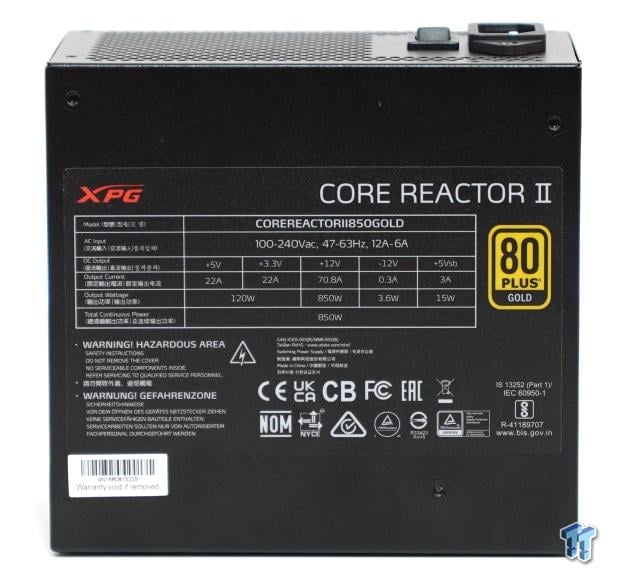
The large sticker on the underside of the Core Reactor II shows all the power specifications outside the packaging.
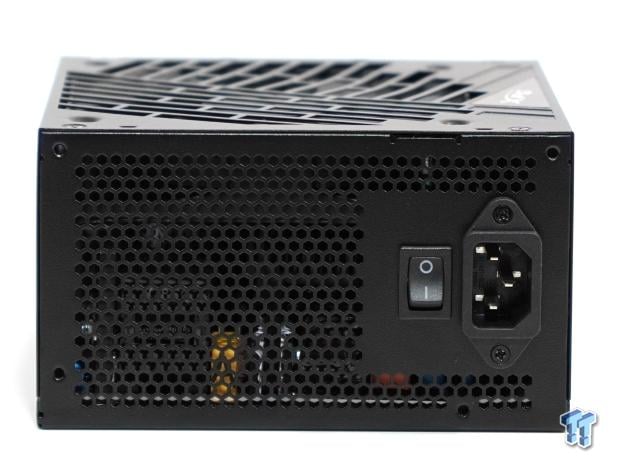
The rear power input of the Core Reactor II has a basic power rocker switch and a power input. The back air mesh is a honeycomb pattern. I would have liked to see the same angler design that the rest of the Core Reactor II has, which would have made this seem more cohesive.
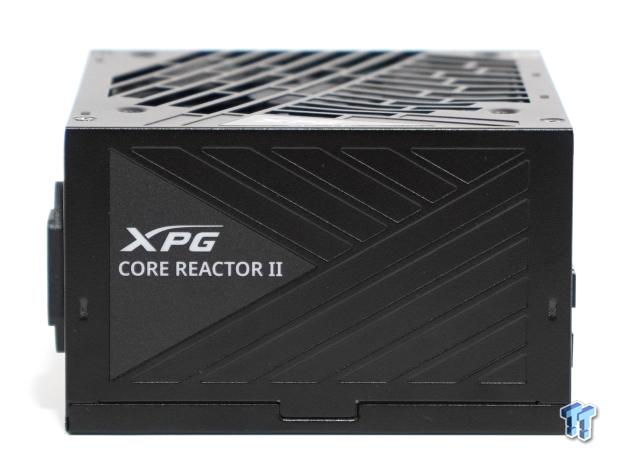
This side of the Core Reactor II shows some angular design and the XPG Core Reactor II name.
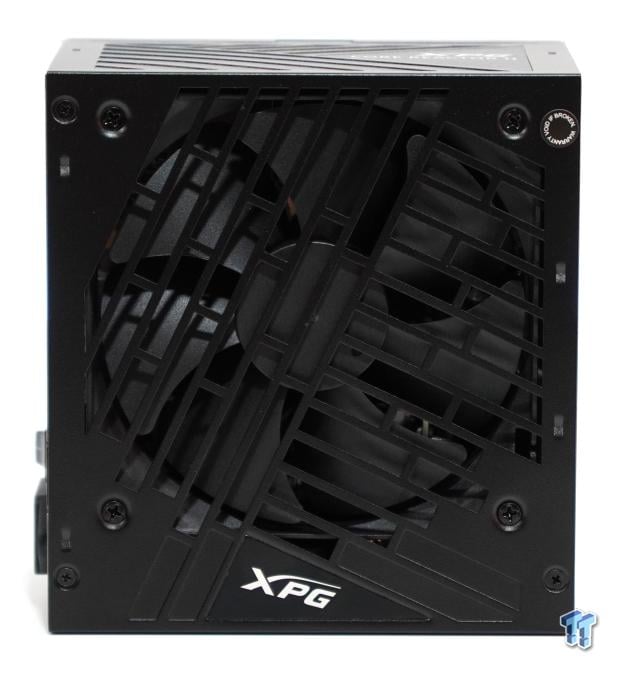
The fan grille side of the Core Reactor II again shows an angular design, which should allow a good amount of air for ventilation. More XPG branding is also present.
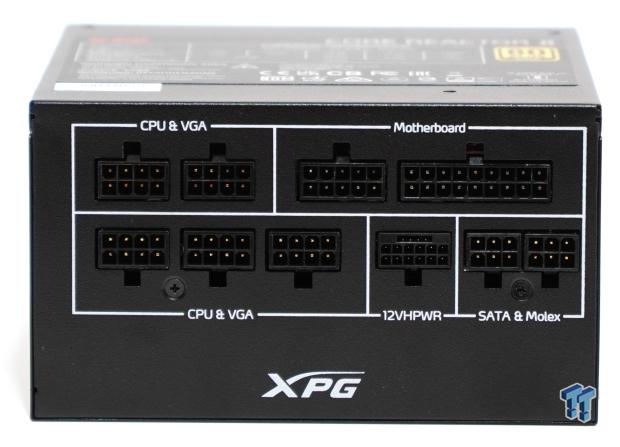
The cable input section has been sectioned off. Two eight-pin inputs for either CPU or VGA, a split connection with ten + eighteen pin configuration. Next, we have three more CPU and VGA eight-pin inputs. The 12VHPWR link allows for 600 watts if the GPU supports this connection. Lastly, there are two six-pin connections for SATA and Molex connections.
Inside the XPG Core Reactor II 850w ATX 3.0 PSU
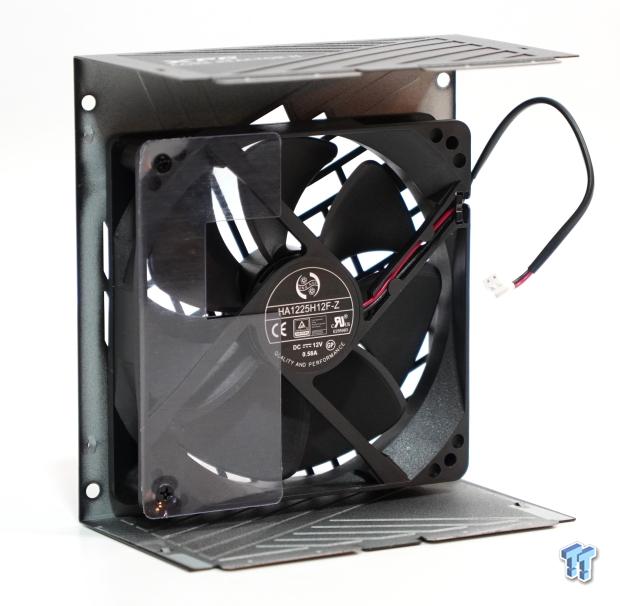
Opening up the Core Reactor II 850w, the fan that XPG has chosen to use here is Ong Hua, model number HA1225H12F-Z, running at 2200 RPM with 12V at .58A.

Removing the 120mm fan reveals a large capacitor, main transformer, and other components.
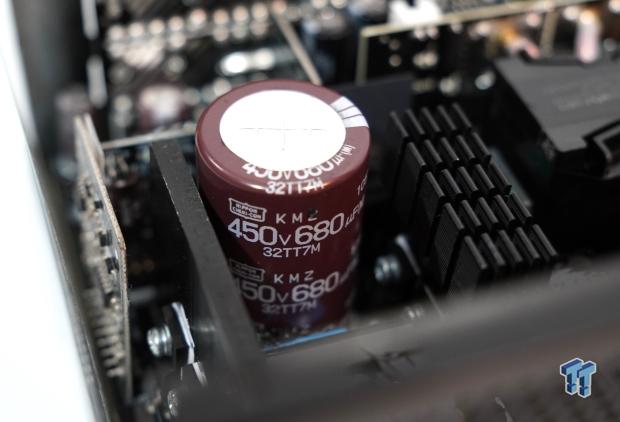
Nippon Chemi-Con (KMZ) is a Japanese company that makes this single large capacitor, rated at 450v with 680µF.

The main transformer of the Core Reactor II platform seems robust enough for 850-watt platforms.
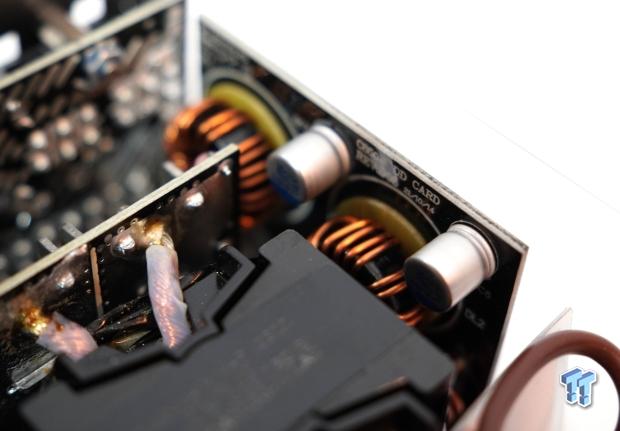
Here are the two VRM inductors on a daughterboard. These are responsible for the 5V and 3.3V rails.
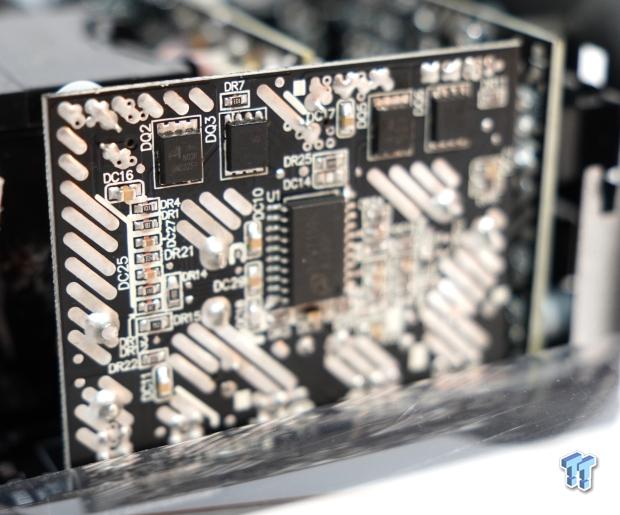
Here is the backside of the VRM daughterboard, showing the four VRM modules with a logic chip in the center.
Test System
- Motherboard: B650 AORUS Elite AX (AMD B650) - Buy from Amazon
- CPU: AMD Ryzen 9 7950X - Buy from Amazon
- Cooler: Deepcool AK620 Digital - Buy from Amazon
- Memory: Patriot Viper Venom 32GB DDR5 5600 RGB - Buy from Amazon
- Graphics Card: NVIDIA RTX 3090 Founders Edition - Buy from Amazon
- Storage: Corsair MP600 PRO XT Gen4 PCIe x4 NVMe M.2 SSD - Buy from Amazon
- Case: XPG Valor Mesh - Buy from Amazon
- Software: AIDA64 Engineer 6.32.5600, and CPU-z 1.94.0 x64
- Power Supply: XPG Core Reactor II 850w ATX 3.0 PSU - Buy from Amazon
- OS: Microsoft Windows 11 Pro 64-bit Build 22621 - Buy from Amazon
- Software: AIDA64 Engineer 6.8.6300, and CPU-z 2.03.0 x64
Final Thoughts
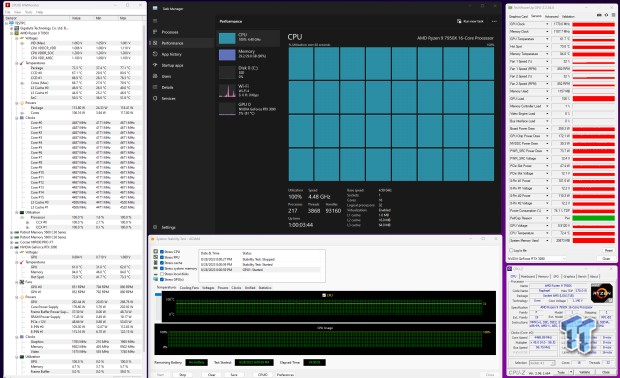
Running the typical ATX hardware components, which consists of an AMD Ryzen 9 7950X running 16 cores (1.14 vcore) and 32 threads, the AM5 motherboard is a B650 AORUS Elite AX, 32GB of Viper DDR5-5600 from our friends over at Patriot Memory, and an NVIDIA RTX 3090 FE running at a 75% power limit.
Loading up the XPG Core Reactor II 850w ATX 3.0 PSU, the AMD Ryzen 9 7950X CPU package wattage ran up to about 114 watts, while the NVIDIA RTX 3090 FE drew around 259 watts. The motherboard, the B650 AORUS Elite AX, draws approximately 36 watts, measured from pins 24 (ground) and 11 (+12V1) with a digital multimeter. Power drawn from the wall was measured with a Killawatt P3 digital electrical usage monitor, which was 458 watts.
The total wattage reported from HWMonitor was 376 watts; adding 36 watts from the motherboard makes for 412 watts. 412 divided by 458 is .89556 or 90% rounded up, making the 80 Plus Gold certification for efficiency at a 50% PSU load. This testing was done for 24 hours by running the Aida 64 Engineer's System Stability Test. Monitoring used was CPU-Z, GPU-Z, Windows Task Manager, and HWMonitor.
So, the XPG Core Reactor II 850w ATX 3.0 PSU was right on the money for what was expected. Priced at $125 currently on Amazon, it is a decent deal for anyone looking for a good quality, fully stable, low-cost ATX 3.0 PSU. I can't find anything wrong with the Core Reactor II from XPG. Did I mention that the XPG Core Reactor II line of PSUs also has a 10-year warranty? That one pretty much seals the deal.

